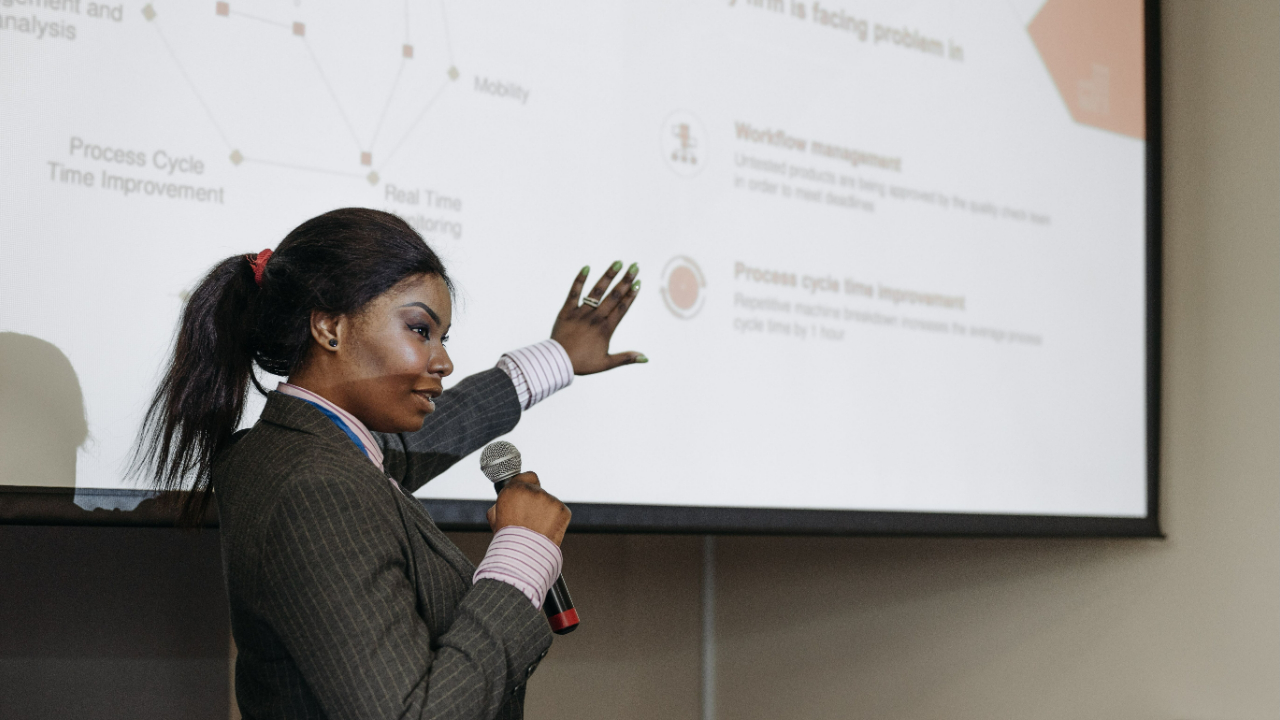Practical Tips. Useful Advice.
Sign-up to be the first to receive notification of new posts!
Persuasive Presentations: The Power of Verity, Perspicacity, and Simplicity

Effective communication is an essential leadership skill.
Whether you are pitching an idea, seeking investment, being interviewed, or trying to sway your team or students to take action, the ability to deliver a persuasive presentation is critical to achieving your objectives. In this article, we explore three key elements that can significantly enhance the impact of your presentations and leadership communication: Verity, Perspicacity, and Simplicity.
Verity: Honesty and Authenticity
Verity, often defined as truthfulness or sincerity, lies at the core of persuasive presentations. In a world where information flows rapidly and skeptics and falsehoods abound, being genuine and honest can set you apart from the crowd with a refreshingly human approach. Here are some key aspects of Verity in your communications, including formal presentations:
a) Knowing Your Stuff: Being well-prepared instills confidence in your audience. Research thoroughly, understand the...
4 Tips for Engaging Presentations

Originally published March 2023
Presenting in front of people can be nerve–wracking – it doesn’t matter if it is in person or online. Many of us tend to be hard on ourselves and think that we appear incompetent if we make a mistake or that we’ll be judged harshly. It's one of the main reasons people tend to stick to a script rather than pausing, connecting, and having a conversation with their audience.
We don’t have to feel this way!
Let go of the need to be perfect. Instead, incorporate these tips to truly engage your audience when you're in the spotlight.
Tip #1: Focus on things that matter
When speaking, even in a casual setting, people tend to use filler words to allow their brains to catch up. Filler words can take the form of "um," "like," "okay," "you know," and so on, and these are common and natural. An excellent way to check OVERUSE of fillers is by recording yourself and tallying every time you stall the wording of your...
Creating an online course? Here’s what you need to know - Part IV

Beta Testing
Hurrah! Your online course is complete!
So, now what?
The first thing to do once you have a completed course framework is to make sure that it all works and flows properly. When it comes to online courses, you’re not only looking to make sure that it actually works, (the technology and software are functioning as desired), but you will also want to make sure that the content flows properly, makes sense to your target audience and yields the results you had intended and are promoting.
Although it can be tempting to launch right away, the benefits to testing before launch are plentiful and should be thoroughly considered.
These include:
- The ability to understand how the flow of the course will work in real-time
- Seeing and reacting to actual results and transformations within your students
- Collecting testimonials or case studies suitable for launch and promotional messaging
- Understanding the degree of...
Creating an Online Course? Here's What you Need to Know - Part II

Part II - Facilitation
In Part I of this series, we discussed the boom of online learning, the benefits of challenges that most course creators and students face and the best practices for preparation and development of your course.
With those foundational pieces in mind, let’s talk about how to best facilitate your course material to ensure that you are delivering an inclusive, engagement-friendly, and educationally impactful experience for your learners.
Facilitation - How to Get Started
When it comes to the actual facilitation of your online course, there are a number of areas you are going to want to focus on, including:
- Securing the Tools of the Trade
- Creating a Comfortable and Inclusive Environment
- Outlining Clear Goals and Expectations
- Offering Behind the Scenes Support
- Fostering Participant Communication
- Including Opportunities for Engagement
- Facilitating Forward Movement
Within this article, we will go through each of these areas with recommendations on how to best...
The Importance of Feedback

The Importance of Feedback
When we’re learning a new skill or enhancing existing skill sets, one of the most important parts of that learning curve is feedback. Honest feedback helps individuals to learn and grow in a fashion that is supportive and appreciative. For many, feedback serves as an important motivator for growth and expansion, allowing the recipient to gain real-time constructive points to help improve their performance.
Understanding how we are perceived by others is paramount when learning a new skill, especially one in the field of communication.
The best feedback takes place when the provider is actively listening, analyzing and offering the best solutions for improved performance. Improved focus typically leads to improved results, making feedback an essential mechanism to effective public speaking.
The benefits of offering constructive feedback
At shiftED, we know that offering constructive and positive feedback is the cornerstone to...
7 Tactics to Building Audience Engagement into your Online Presentation

If you’ve worked with us in the past, you’ve likely heard us mention the WOSLIE Way. If you haven’t, you’re probably wondering what it is.
WOSLIE is an acronym for six critical strategies for activating audience engagement during your presentations - whether they are online, in person, or a hybrid of both. While shiftED formulated the strategies, it is up to the presenter to determine how best to implement them, based on their audience, their content, their comfort and experience level, and other important factors. After we introduce these principles during our workshops and courses, we discuss practical applications for incorporating them based on specific participant scenarios. We believe there is no ‘one-size-fits-all’ approach to presenting, and take a heuristic view with our training and coaching. Because most of our workshop and 1:1 coaching clients have been primarily online for the past two years, the conversations have been dominated by...
The WOSLIE Way for Audience Engagement

All too often, online presenters are in a one-way conversation during which they push out a bunch of information to a group of silent audience members. This can happen when presenters experience internal and external barriers, such as self-confidence and familiarity with the technology.
The good news is, there are a host of practical strategies that are quick and easy to incorporate in your next presentation.
When I teach my Online Presentation Secrets workshops, I share the WOSLIE Way, shiftED’s methodology for activating audience engagement. When I coach individual clients, we peel back the layers to get to the root of their barriers and then we work together to determine specific WOSLIE tactics to incorporate in their presentations, based on their audience and their objectives...and their comfort level.
WOSLIE is uncomplicated, but it can be as nuanced as your experience warrants with literally...
How to Build Credibility and Trust as a Virtual Speaker

Building credibility and trust as a speaker is a lot more involved than simply including your credentials on your opening slide.
There is a science to earning respect with an audience and a few key steps to get you there:
- Arrive early - Greet your audience as openly as you would in person. Hiding behind slides and not being visible is ill-advised. Instead, turn on your webcam and be ready to present before your audience joins the virtual meeting room.
- Lead with something relatable - a story or scenario that you have experienced that lets your audience know you have been where they are. This lets them know that you are a trusted advisor that can get them where they want to go.
- Give them something first - Before you ask them to trust you, give them something of value, determine what is keeping them up at night and let them know how you can solve that problem.
- Provide solutions - It’s one thing to identify the problem, but unless you’re giving proven solutions, it...
A Reflection on Inclusive Presentations: 4 Practical Strategies for Being an Active Ally

Something’s been bothering me, weighing heavy on my heart and mind. If you know me well, you likely already know that I cry at commercials and feel intense empathy when in conversation with another human. I’m instantly joyous with you, yet easily moved to tears…even during a presentation, which happened recently.
During my workshops, we often discuss presenters and their ability to connect with their audience. We talk about strategies for building relationships with our audience.
As presenters, some are quite naturally able to connect with audiences. They bring passion, they seek to understand, they aim to help. I’ve seen shiftED alum and some of you present to audiences, and I’ve witnessed time and again how you connect with your audiences of one or many, in person or online.
I observe and I learn. Always. Wanting to do better.
A perpetual student.
The participant who welled up my eyes this past week pointed to the one-on-one conversation we...
Optimizing Online Learning - After the Event

In two previous blog posts, I shared tips for optimizing the online learning experience before the learning event takes place as well as during the actual learning event. If you present online to groups of participants within your organization, there are strategies within this series of three blog posts for increasing adoption rates during firm-wide policy rollouts or technology implementations or other internal training initiatives. If you are a business owner or consultant and you present online to your clients, you might find a nugget or three for maximizing audience engagement and ensuring your objectives are met.
Whether you present online within your organization or beyond, seek to understand your specific audience's preferences then apply best practices and only the very latest research on teaching and learning.
In this post, as with the others, you'll find a few ideas for optimizing the online learning experience for your...


